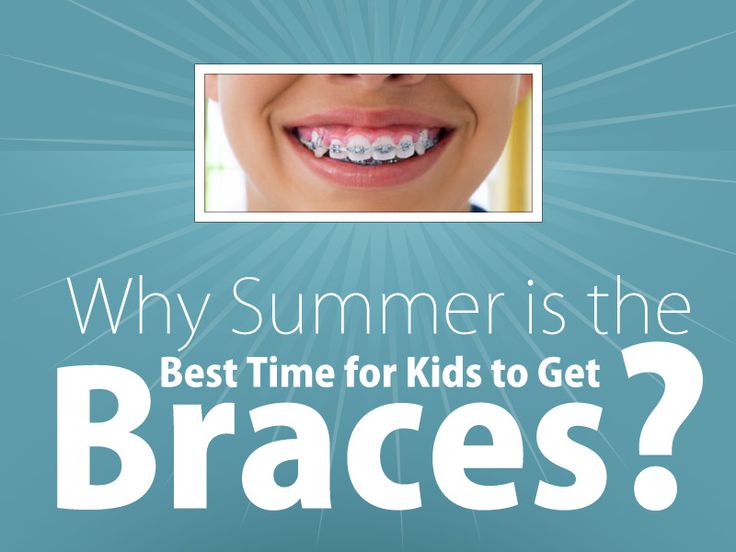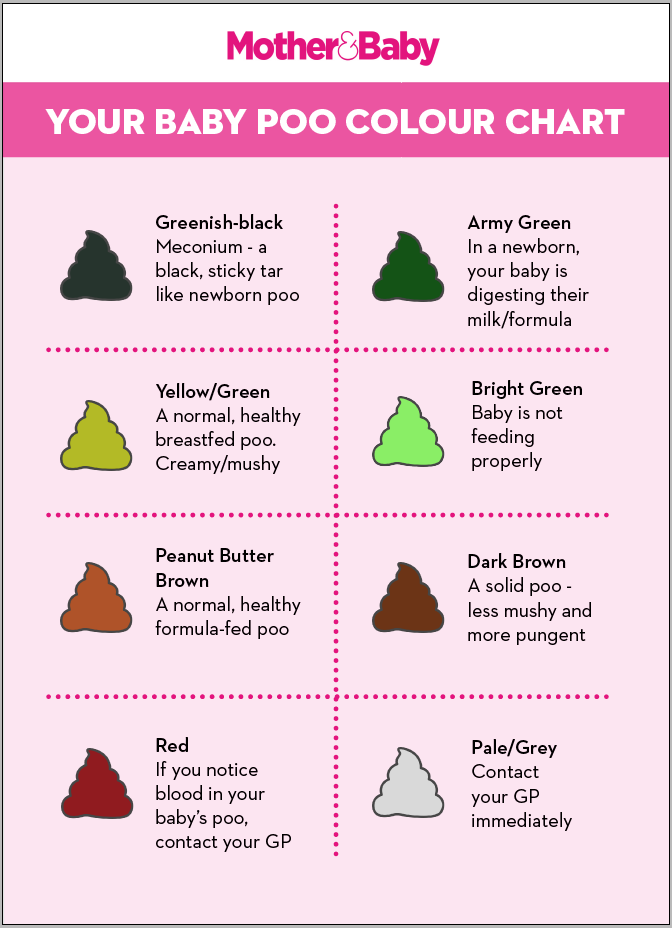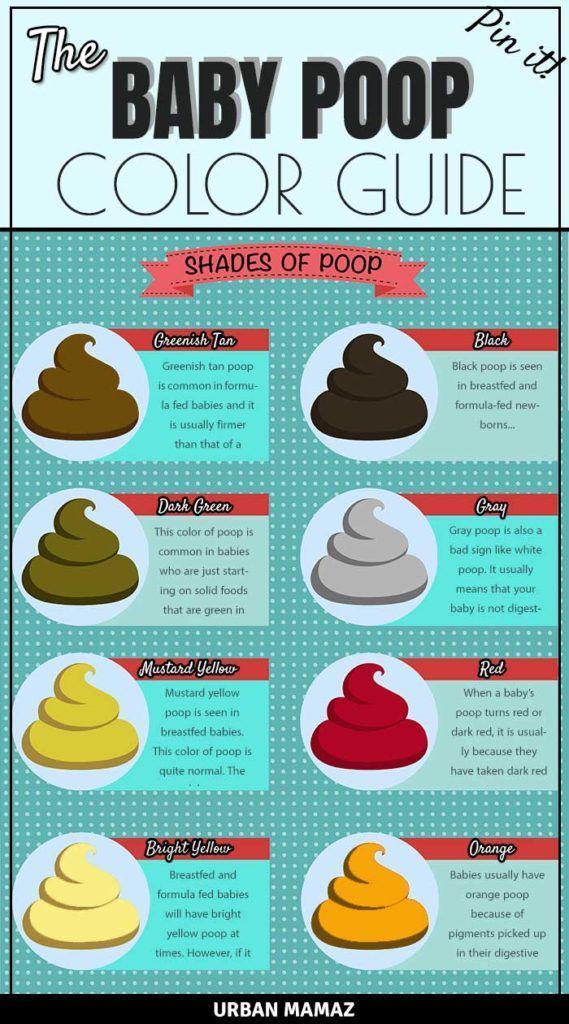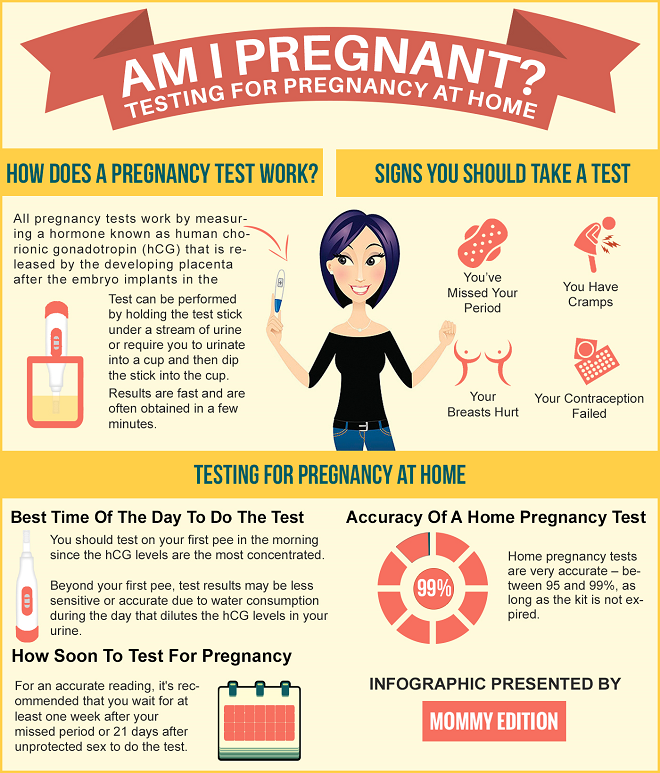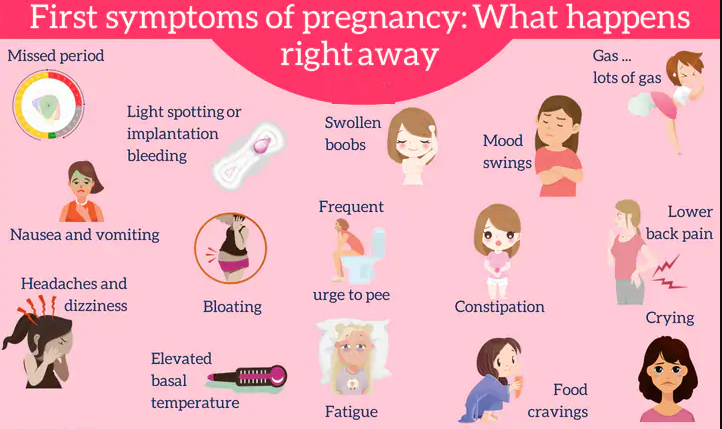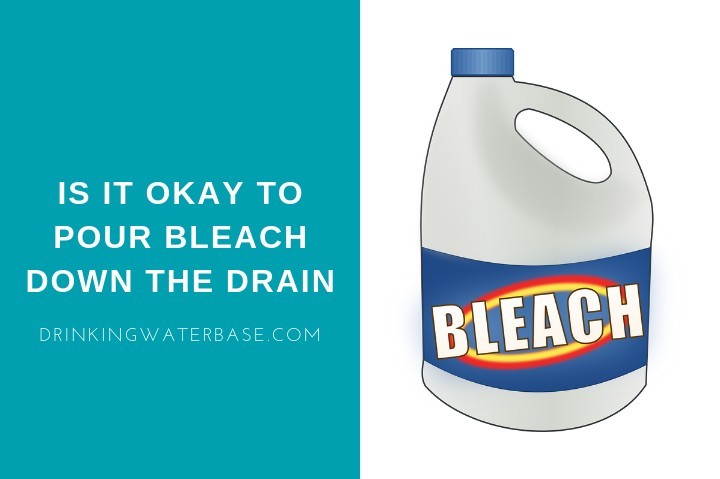How to get free braces for my child
How to Qualify for Free Braces
Can You Get Braces for Free?
Braces are a complex medical procedure designed to improve your smile and boost your oral and overall health: for this reason, they tend to be costly. According to the American Dental Association, the average cost of braces for children is between $4,685 and $6,500, and for adults, slightly higher.
Costs vary for several reasons. Firstly, there are a variety of braces treatments, with different associated costs. Traditional metal braces are the original form of orthodontia, and they tend to cost the least.
Boutique treatment options like lingual braces offer a discreet design on the inner part of the teeth and cost much more. The specific provider you select, as well as the region where you live, will also affect the price of the braces treatment.
Remember, orthodontic care is a medical procedure, so it’s never “free”: between the cost of the appliance, the use of specialized technology, and the labor of the expert orthodontist and staff, orthodontic care is costly.
However, for certain young patients, it is possible to get braces fully covered and avoid any expense for your family, by using state-sponsored insurance or federal programs like Medicaid or CHIP. In addition, certain dental scholarship programs offer orthodontic care for qualifying children.
While not all children and young adults may qualify for fully covered braces, there are also ways to greatly lower the cost of orthodontia, using insurance and other programs.
- Get the full guide to braces treatments
How to Qualify for Free Braces for Kids
1Medicaid/CHIP or State-Sponsored Insurance
2Private Dental Insurance or FSA/HSA Plans
3Smiles Change Lives and other braces discounts programs
4Dentalsave or other dental savings programs
Up to What Age Are Braces Free?
Free Braces for Adults
While it is not common to get braces treatment fully covered as an adult, there are certain exceptions. If you qualify for Medicaid and have a medical condition treatable with braces, may be able to get your braces expenses fully covered. This requires the orthodontist to determine that the braces are medically necessary.
If you qualify for Medicaid and have a medical condition treatable with braces, may be able to get your braces expenses fully covered. This requires the orthodontist to determine that the braces are medically necessary.
Some orthodontic conditions frequently covered by Medicaid:
- Accidental trauma to the mouth, teeth, or jaw
- TMJ
- Sleep apnea
- Severe malocclusion causing physical or emotional harm
You may be subject to a lifetime maximum with Medicaid orthodontic care. Eligibility also varies by state, and not all orthodontists take Medicaid. Talk to your orthodontic provider if you would like to use Medicaid to pay for your braces.
Free Braces When Pregnant
It is perfectly safe to get braces while pregnant. There are certain things to consider if you plan on getting braces treatment while you are expecting a baby: gum inflammation, headaches, and increased plaque growth are common side effects of both braces treatment and pregnancy.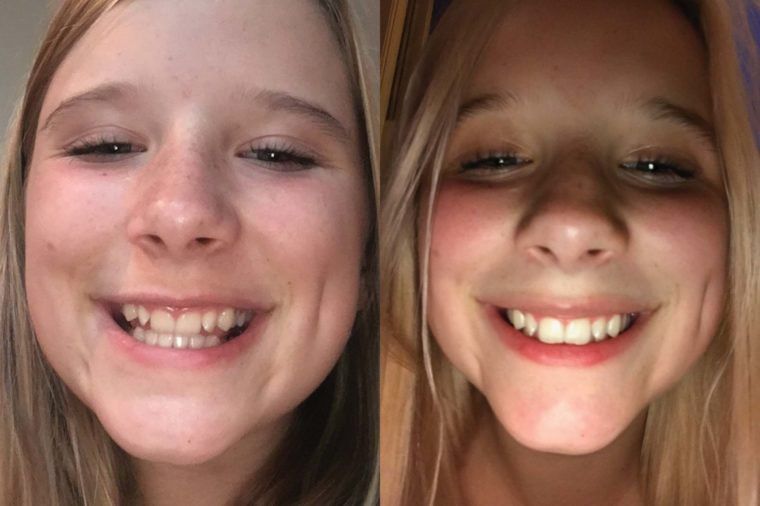 Talk to your orthodontist about when to begin braces treatment if you are also pregnant or planning on becoming pregnant.
Talk to your orthodontist about when to begin braces treatment if you are also pregnant or planning on becoming pregnant.
If you qualify for Medicaid or another state-sponsored insurance plan, you may be able to get your braces covered as an adult. In the UK, the NHS specifically covers braces treatment for pregnant women, but in the U.S. your pregnancy does not impact whether or not your subsidized insurance will help pay for braces.
If you have Medicaid or a state-sponsored insurance plan, schedule a consultation to find out if your condition may qualify for braces coverage.
Tips to Make Braces Affordable
Even if you can't get braces covered for free, there are many ways to save on braces and make them more affordable.
1Flexible Monthly Savings Plans
2Family Discounts
3Healthcare Credit Cards
4Seek treatment in a freestanding orthodontic facility
5Seasonal promotions and office promotions
Diamond Braces’ Commitment to Affordable Smile
Diamond Braces has been offering affordable, accessible orthodontic care in the Tri-State area for over 20 years. In that time, we’ve helped more than 100,000 patients achieve beautiful, healthy smiles.
In that time, we’ve helped more than 100,000 patients achieve beautiful, healthy smiles.
Our prices are up to 30% lower than the national average because we believe that cost should never get between you and the smile you deserve. We accept all insurance plans, offer low monthly payment plans, and have staff on hand to help you find ways to easily pay for your family’s care.
Plus, we offer a Lifetime Smile Maintenance Guarantee – because we’re that committed to your healthy, lasting smile.
Schedule a consultation with our team, either in a convenient location near you or online, right from home. Our initial consultations are completely complimentary, with no commitment necessary.
Schedule a consultation and start smiling for 30% less!
Free Braces Programs For Adults, Students, And Children
by Kevin Haney
Most orthodontists do not work for free, so how can you get braces at no cost? Find a deep-pocket third party that will pick up most of the charges!
Learn how to qualify for free braces programs, recognizing that the eligibility criteria will vary for adults, students, and children.
Finding an orthodontist that works pro bono or a program that covers 100% of your costs will prove elusive because every option we have surfaced requires some level of patient investment.
However, finding multiple sources of financial assistance is very realistic, which could whittle your out-of-pocket costs down close to zero – if lucky.
Free Braces for Kids
The free braces programs for children are more numerous because orthodontists recommend that treatment begins during your teen years while your jawline has more flexibility and responds more readily to the pressure applied to your teeth.
Table Of Contents
- Free Braces for Kids
- Dental Charities
- With Medicaid
- CHIP Grants
- Free Braces Programs for Adults
- Financial Help
- Grants
- Financing
- Middle-Income Adults
- Low-Income Adults
- Pregnant Women
- Disabled Adults
- Financial Help
- Free Braces for Students
- High School Students
- College Students
Dental Charities
Several dental charities operate almost free braces programs for children dealing with challenging circumstances. They may receive government grant money (rare) or rely on donors’ generosity (more common).
They may receive government grant money (rare) or rely on donors’ generosity (more common).
At least three dental charities offer low-cost orthodontia treatment for kids (after paying a modest application fee and family investment ranging from $200 to $650).
- Smiles Change Lives
- Smile for a Lifetime
- Donated Orthodontic Services
Applicants must meet similar eligibility criteria at each organization, including many of these possible requirements.
- Be 7 – 18 years of age
- Good oral hygiene and no unfilled cavities
- Moderate to severe need for orthodontia
- Family income below poverty guidelines
- Pay two non-refundable fees
- Letters of recommendation
- Volunteer community service
- C average or above GPA
With Medicaid
Medicaid is the primary free braces initiative for kids living at or below the federal poverty level when it pays most of the charges. The Early Periodic Screening, Diagnosis, and Treatment (EPSDT) program requires states to pay for orthodontic services necessary to prevent disease, promote oral health, and restore oral structures to health and function.
Medicaid covers orthodontics for children under 19 under both components.
- The dental insurance element pays to correct handicapping malocclusion as measured by a point system or criteria-based objective benchmark.
- The health insurance element pays to treat congenital disabilities requiring orthodontic correction.
- Cleft Lip and or Cleft Palate
- Crouzon Syndrome/Craniofacial Dysostosis
- Hemifacial Hypertrophy/Congenital Hemifacial Hyperplasia
- Parry-Romberg Syndrome/Progressive Hemifacial Atrophy
- Pierre-Robin Sequence/Complex
- Treacher-Collins Syndrome/Mandibulofacial Dysostosis
CHIP Grants
CHIP grants could provide mainly free braces when it covers most of the costs for families that earn too much money to qualify for regular Medicaid. The Children’s Health Insurance Program (CHIP) mandatory dental benefits include services that sometimes include straightening teeth.
Use this official CHIP coverage statement to assess whether your child might qualify for benefits.
“Orthodontia is required to the extent necessary to prevent disease and promote oral health, [and] restore oral structures to health and function. States are not required to pay for treatment that they determine is not medically necessary, such as services for cosmetic reasons.”
Free Braces Programs for Adults
Adults over 21 quickly discover that free braces programs are more difficult to find because the qualifying criteria are the strictest. It is more affordable to straighten your teeth while a teenager.
Financial Help
Financial assistance for braces for adults might be a more reasonable expectation than a free program that covers all fees. You might find some help lowering costs f you need to straighten your teeth but cannot afford orthodontia.
Grants
Grants for braces for adults are scarce as the federal government does not send money directly to individuals.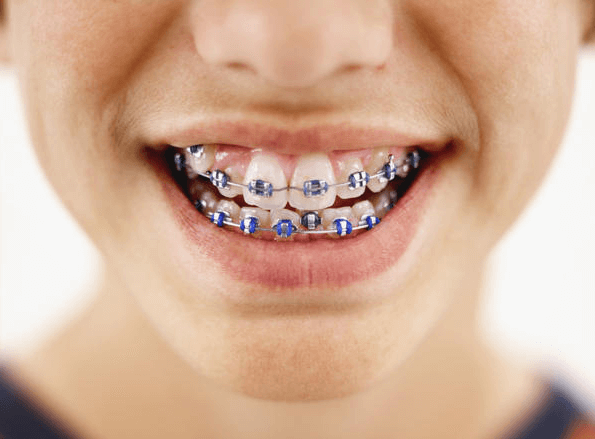 However, people over 21 might be able to afford orthodontia by getting financial assistance with other household expenses.
However, people over 21 might be able to afford orthodontia by getting financial assistance with other household expenses.
Free grant money for bills and personal use can cut costs elsewhere, providing indirect help for adults hoping to align their teeth properly.
Financing
A Flexible Spending Account (FSA) provides two types of financial assistance to help adults with their orthodontia costs. You do not want to overlook these hidden advantages.
- Monthly payment plans for braces without insurance do not have a credit check when funded through an FSA. Your employer must immediately reimburse all qualifying expenses, even if you have not yet contributed enough money into your account.
- Paying for orthodontic work through your FSA lowers your after-tax costs by reducing your income subject to three different levies.
- Federal income taxes
- FICA payroll taxes
- State income taxes (where applicable)
Middle-Income Adults
Health insurance is a free braces program for the tiny minority of middle-income adults who qualify when it covers most costs. Most dental plans will not pay for orthodontic treatment beginning after age 19.
Most dental plans will not pay for orthodontic treatment beginning after age 19.
Health insurance covers braces for adults paying the majority of costs when medically necessary: treats an injury or disease that affects the body. For instance, people with these conditions might be eligible.
- Temporomandibular Joint Disorders requiring bite adjustments
- Sleep apnea occurs when crooked teeth restrict or block airflow
- Reposition dislodged teeth after a non-biting accident affecting the jaw
Low-Income Adults
Medicaid is a free braces program for the few low-income adults who qualify. Medicaid is government-sponsored insurance for families living at or below the federal poverty level, with two distinct elements.
- Medicaid adult coverage for dental work varies by state. However, one concept remains constant across the country: it does not pay for braces for people over 21 to correct a handicapping malocclusion.
- Medicaid adult coverage for traditional healthcare is more uniform across the states.
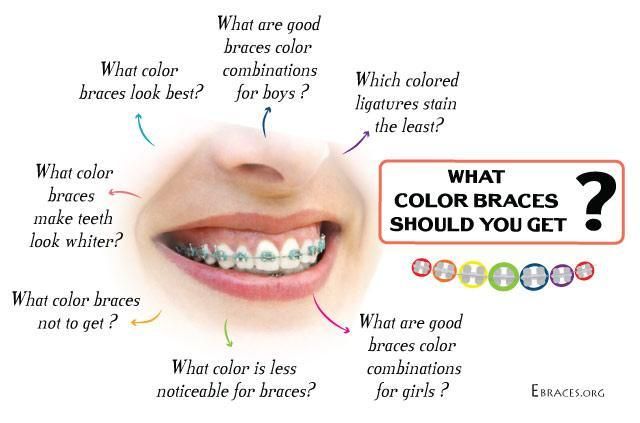 However, a person over 21 must have a medically necessary reason.
However, a person over 21 must have a medically necessary reason.
So, how do you get free braces with Medicaid for adults? File a claim through the health insurance component after documenting a medically necessary reason: treatment of a non-biting accident or disease such as TMJ or sleep apnea.
Pregnant Women
Medicaid can also be the free braces program for adults while pregnant. Many women do not qualify for these government benefits aimed at low-income families because they earn too much money to qualify.
Medicaid can deny coverage to pregnant women, but this occurs less frequently as the eligibility criteria are more lenient in two critical areas.
- Each state lifts the maximum percentage of qualifying PFL, ranging from 144% in Utah to 380% in Iowa
- Each unborn baby counts as an additional household member, meaning each fetus adds $4,720 to the limit
Disabled Adults
Medicare is a free braces program for a sliver of disabled adults receiving Social Security Disability Insurance (SSDI) for more than two years. Medicare is government-sponsored insurance for seniors over 65, people with end-stage renal disease, and individuals with disabilities.
Medicare is government-sponsored insurance for seniors over 65, people with end-stage renal disease, and individuals with disabilities.
Medicare acts as health insurance but does not pay for dental work or orthodontia unless medically necessary: treats a disease or injury.
However, Medicare dental providers (including orthodontists) are scarce because they have little incentive to accept assignment (take the allowed amount as full payment). Only a handful of disabled adults have a medically necessary reason for orthodontic work.
Free Braces for Students
The free braces programs for students depend on the grade level because the opportunities for third-party payment are more abundant when treatment begins during your teen years (age 19 or earlier).
High School Students
Dental insurance with orthodontic benefits might be the most prominent free braces program for high school students. Various options cover teenagers, meaning that parents have fewer out-of-pocket costs.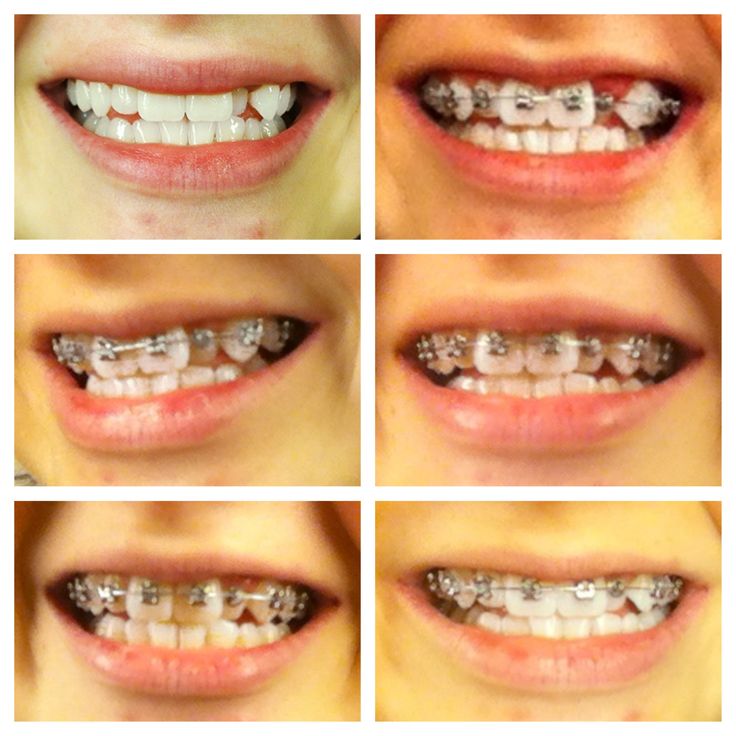
- The Medicaid dental insurance component covers braces for high school students from qualifying low-income families (see above) and does not require planning. Medicaid should pick up the majority of costs with no waiting period.
- Supplemental orthodontic insurance covers braces for high school students from middle and upper-income families but requires advance action because you must satisfy a waiting period. However, the need to straighten your teenager’s crooked teeth should not surprise you.
College Students
The free braces initiative for college students could be an orthodontic residency program near their campus needing volunteer patients willing to act as Guinea pigs.
Orthodontia residents need to learn their craft, and practice makes perfect. Beginners supervised by faculty handle the initial consultation, installation (banding and bonding), periodic adjustments, removal (debanding), and retainer fitting.
The American Association of Orthodontists publishes a directory of accredited residency programs that might treat college students at no charge.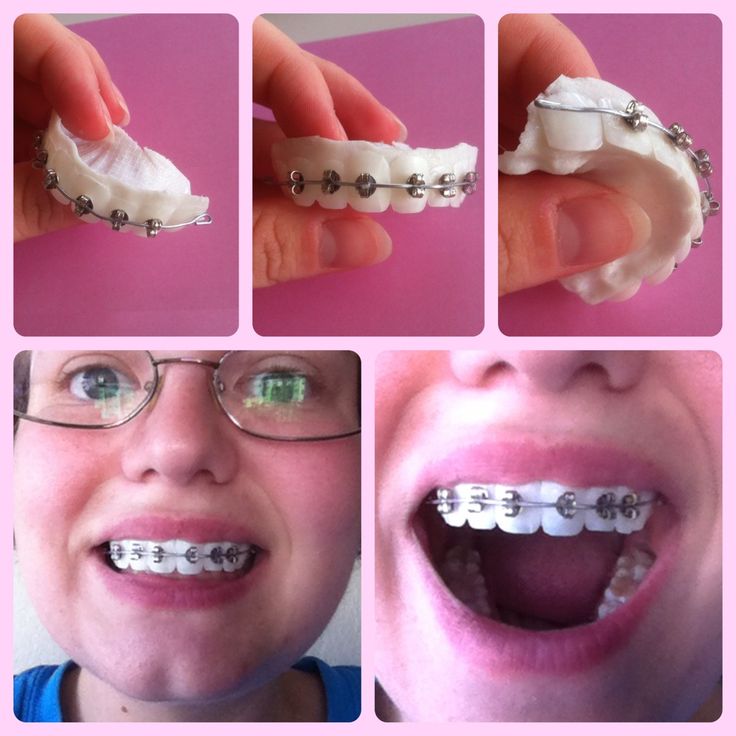 However, modest discounts might be a more reasonable expectation.
However, modest discounts might be a more reasonable expectation.
What is included in the MHI in orthodontics for children and are free braces for children under the MHI
In the Russian Federation, all children, as well as adults, can receive free medical care in orthodontics under the MHI. But when going with a child to dentistry, you need to take into account some differences in the procedure for contacting a pediatric orthodontist.
- What is included in the list of free services in orthodontics under compulsory medical insurance for children
- Is it possible to supply free braces for children under compulsory medical insurance
In order for a child to receive assistance free of charge, you need to take into account that in addition to having a CHI insurance policy, parents need to:
- Have your child's birth certificate with them;
- It is obligatory to have your own passport.
In addition, the presence of parents is also included in their obligation when visiting a dentist.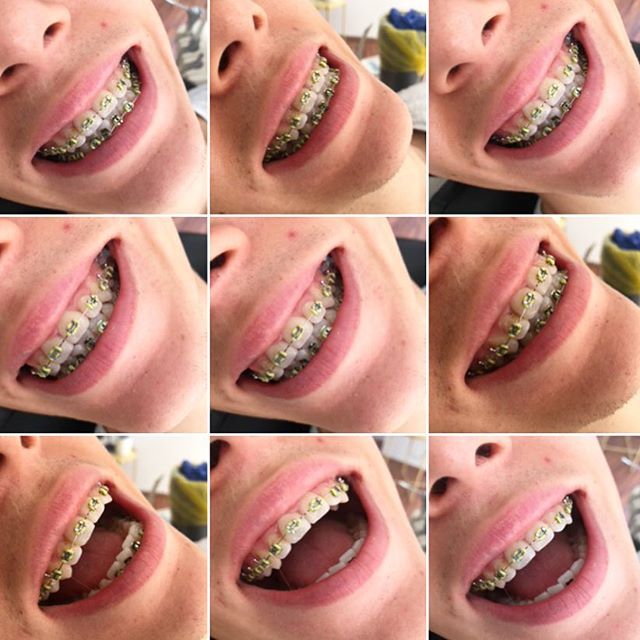 But as an exception, in case of acute unbearable pain, these documents may not be required.
But as an exception, in case of acute unbearable pain, these documents may not be required.
So that the visit to an orthodontist does not take parents by surprise after a change of residence, it is best to visit a nearby clinic immediately after moving to a new apartment and, having written a corresponding application at the reception on a special form, “attach” your child to dentistry. Only after that you can count on the full service for compulsory medical insurance. nine0003
What is included in the list of free services in orthodontics under compulsory health insurance for children
Children, just like adults, are entitled to receive a number of free services under the insurance policy. What is included in the list of orthodontics according to CHI for children:
- surgery, including tooth extraction, gum surgery, opening of abscesses;
- treatment of salivary glands;
- oral hygiene procedures;
- helping with painful teething in babies; nine0006
- treatment of dental caries and related additional procedures such as: anesthesia, x-ray of the tooth (if prescribed by the surgeon), various therapeutic measures.
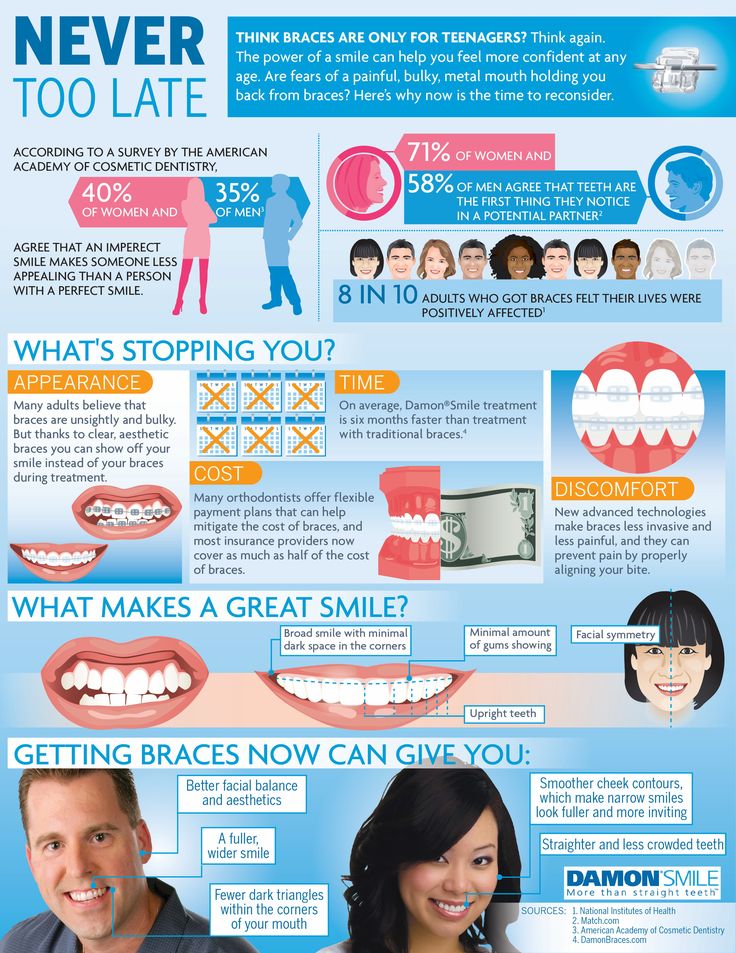
In addition, CHI insurance policies contain a list of free drugs used in treatment. This also includes the free provision of disposable dental instruments and syringes.
Is it possible to supply free braces for children under compulsory medical insurance?
Dental problems in children arise not only due to diseases. Very often, parents do not pay attention to the growth of teeth in their babies, then as a result, grown-up children suffer from malocclusion. This is not only unaesthetic, but also leads to early “wearing out” of the teeth, and cases of speech defects are also possible. nine0003
But when the problem arose, parents began to wonder if it was possible to get braces for children for free under compulsory medical insurance. You have to upset them right away. No, such a service is not provided by the CHI insurance policy. Well, our legislators did not think through all the subtleties of the development of the child's body.
However, if the problem is identified before the child is 5 years old, then a knowledgeable orthodontist can help without resorting to braces. With early detection of malocclusion, you can resort to the use of removable plates or orthopedic caps, which, by the way, should be provided for children free of charge according to compulsory medical insurance. Replacement of plates in case of breakage is also carried out free of charge. nine0003
With early detection of malocclusion, you can resort to the use of removable plates or orthopedic caps, which, by the way, should be provided for children free of charge according to compulsory medical insurance. Replacement of plates in case of breakage is also carried out free of charge. nine0003
But it turns out there is an alternative solution, where would you think? In private paid clinics. Not always and not every day, but paid dental offices hold various promotions with the provision of a free service for installing dental braces.
- As an example, it can be an advance payment for the full course of treatment: you pay for all procedures in advance, and the polyclinic provides the braces themselves as a reward.
- Another option: free testing of new products. nine0006
- With frequent visits to paid dentistry, such a clinic often resorts to a system of accumulating bonuses, which can also be used for free installation of braces if necessary.
There are many more promotions available from private orthodontists. You just need to keep an eye on such offers and use them in time.
You just need to keep an eye on such offers and use them in time.
Braces under the MHI policy » Dental Portal
Is it possible to put braces for free? Free installation of braces, unfortunately, is not included in the standard list of dental services included in the standard list of CHI. Improper closing of teeth is not considered a disease that threatens the life and health of citizens. For this reason, the inclusion of orthodontist services in the medical policy was considered inappropriate. nine0003
Contents
- 1 How to put braces on a child for free
- Who can get braces for free
- 3 How to get braces for free to save money
Photo of braces in the upper jaw
All costs for the correction of the bite must be paid by the patient himself. However, there are several ways not only to reduce costs, but even to install braces for free. nine0003
nine0003
Oddly enough, but such opportunities can be obtained in paid dental clinics. Below are a few examples of savings:
- Trial runs received by private dentists; in order to identify demand and determine the volume of supply, experimental samples of products are offered to patients; in such cases, braces are placed free of charge;
- discounts for dentist services as part of various promotions; nine0005 checking newly invented bracket systems;
- as in most supermarkets, many private clinics use a system of bonus and accumulative points; the passage of a long and (or) expensive treatment will make it possible to install braces for free. nine0006
widespread practice abroad, when visitors to the dental office are invited to test new product samples; taking into account the risk to health, orthodontic appliances are provided without paying for their cost and installation;
Types and methods of payment for setting up orthodontic systems in private dentistry, depends entirely on the prices set in a particular institution. It is also necessary to add that the above options are available only in paid dentistry. State institutions provide only paid services to correct the bite.
It is also necessary to add that the above options are available only in paid dentistry. State institutions provide only paid services to correct the bite.
Such bracketing options, without full or partial payment, are available to any citizen. It is only necessary to study in as much detail as possible the market for services provided by private clinics located in an accessible area. nine0003
Lingual braces
How to put braces on a child for free
The formation of the correct closure of teeth is the main criterion in the development of the human maxillofacial apparatus. The development of a normal bite is divided by dentists into five stages. All five stages of development fit into the age from birth to sixteen years. For this reason, the issue of normalizing the orthognathic bite in children is extremely acute for every family.
A timely visit to an orthodontist will save not only time, but also the cost of correcting misaligned teeth in children.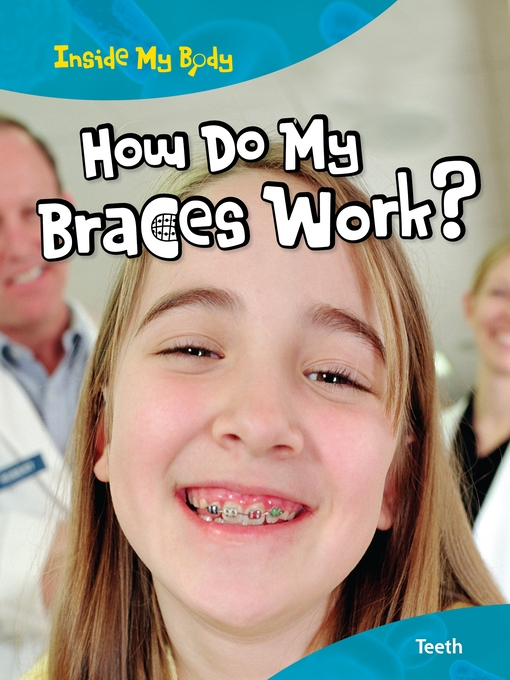 nine0003
nine0003
Identification of malocclusion in the early stages of the formation of the dentoalveolar system makes it possible to apply more gentle (in comparison with bracket systems) methods for correcting improper closing of teeth.
For example, the use of retainers (special plates) and caps is possible even in the first two periods of the formation of the dentition (from birth to six years).
In the later stages of development, retainers are used after the main course of wearing braces, to consolidate the result. nine0003
The original list of dental services under the insurance policy included a point where the dentist could install braces for children free of charge and provide other types of assistance in correcting malocclusion in children.
Unfortunately, in the fall of 2013, the federal health insurance program (CHI) in the field of dental care was significantly reduced. At the moment, orthodontist services in pediatrics are carried out only on a paid basis.
However, using the methods described in the previous chapter, you can significantly reduce the cost of orthognathic bite correction or install corrective products for free. nine0003
Who can get braces for free
There are several categories of citizens for whom the opportunity to use free dental services is especially relevant. Due to lack of funds in the family budget.
For patients in these categories, compulsory health insurance provides for the provision of medical services without paying for the cost of treatment and procedures. Including the assistance of an orthodontist.
Sapphire brackets. Photos after installation and before removal of braces
Groups of citizens and special cases, giving the opportunity to install free-of-charge devices for the correction of occlusion of teeth:
- now more and more popular is the condition in employment contracts, where the employer, who cares about the health of his employees, pays for the services of a dentist; 90,005 families total material income, which is below the subsistence level.
- the setting of orthodontic appliances without payment of their cost is allowed to people with the status of a disabled person, subject to the provision of disability benefits by the state; although completely free installation of braces is not prescribed by law; most likely you can only count on partial payment for treatment;
- people of retirement age receiving minimum pension provision;
- patients who suffered damage due to the complete or partial inactivity of medical personnel; here it should be noted that such benefits are possible only if there is a court decision in favor of the victim. nine0006
 Having such a status, you can count on the full payment for the work of a dentist by the state, including the installation of braces for children for free; nine0006
Having such a status, you can count on the full payment for the work of a dentist by the state, including the installation of braces for children for free; nine0006 Any of the described options will require the future patient to have certain documents confirming his preferential rights to free dental services. It's a good idea to get proper legal advice before trying to get braces under your health insurance policy.
It's a good idea to get proper legal advice before trying to get braces under your health insurance policy.
How to get braces for free to save money
Of course, everyone wants to save money on the family budget, but in the case of orthognathic bite correction, as, indeed, with any treatment, the desire for cheap materials and services can lead to disastrous consequences. nine0003
Photos before and after braces installation
Installation of braces without paying for their cost and installation is possible in cases where the patient belongs to one of the above categories. But there are a number of opportunities that can significantly reduce the cost of correcting the bite.
Below are a few methods that can help you save money on the installation of braces:
- bracketing with metal constructions has a very reasonable price, provided that the patient is not allergic to the materials used; the presence of self-regulating systems will give a threefold savings on visits to the dentist during treatment; nine0006
- The use of a social tax refund (tax deduction) helps to significantly reduce costs, especially for expensive braces;
- exclusion of modern diagnostic methods (creation of a digital model of teeth closing) is also an effective way to save money;
- an active search for various promotions and discounts in private clinics can bring unexpectedly positive results; since the price of braces can be reduced by the manufacturer of bite correction systems.
